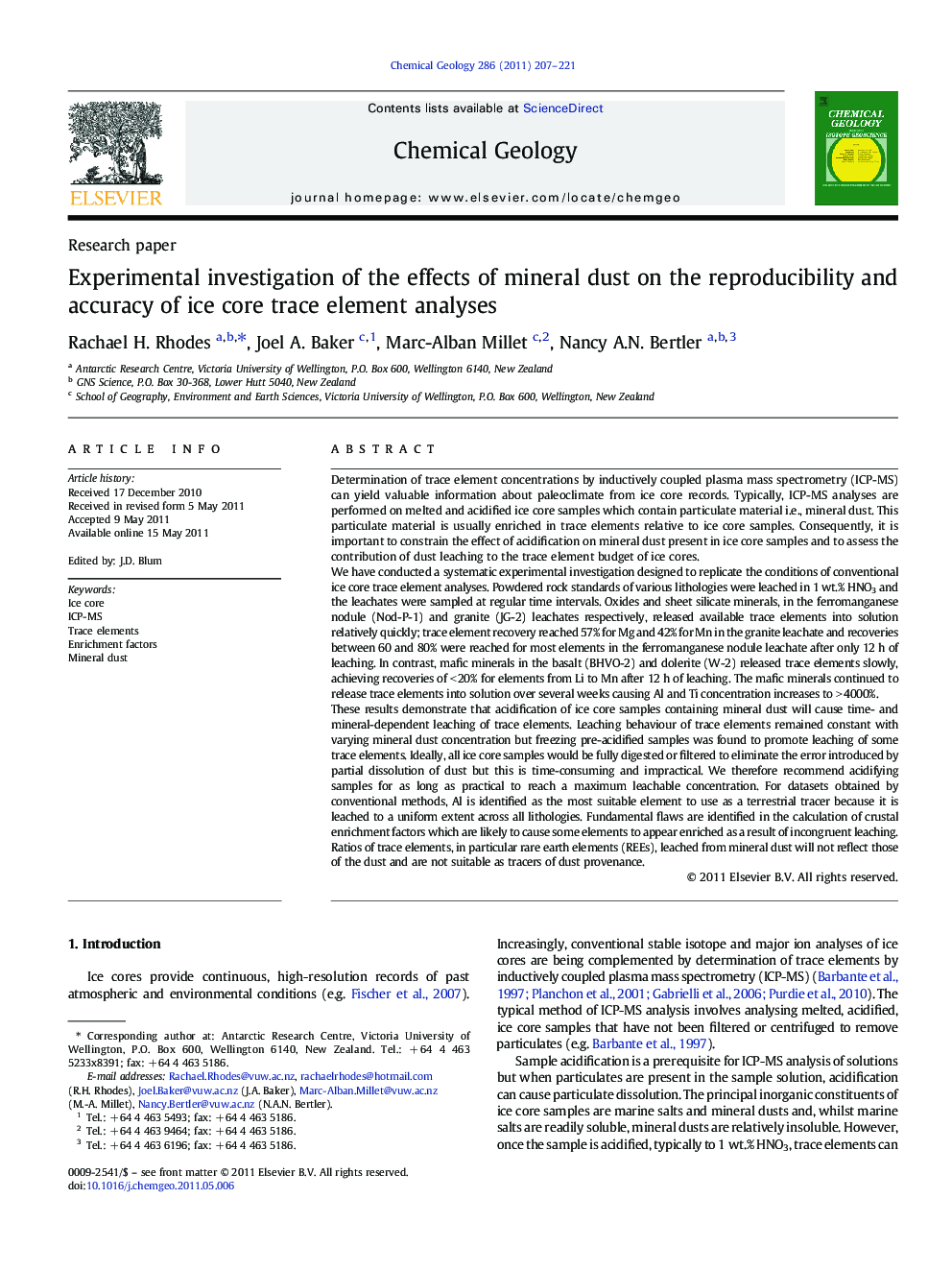| کد مقاله | کد نشریه | سال انتشار | مقاله انگلیسی | نسخه تمام متن |
|---|---|---|---|---|
| 4699618 | 1637664 | 2011 | 15 صفحه PDF | دانلود رایگان |

Determination of trace element concentrations by inductively coupled plasma mass spectrometry (ICP-MS) can yield valuable information about paleoclimate from ice core records. Typically, ICP-MS analyses are performed on melted and acidified ice core samples which contain particulate material i.e., mineral dust. This particulate material is usually enriched in trace elements relative to ice core samples. Consequently, it is important to constrain the effect of acidification on mineral dust present in ice core samples and to assess the contribution of dust leaching to the trace element budget of ice cores.We have conducted a systematic experimental investigation designed to replicate the conditions of conventional ice core trace element analyses. Powdered rock standards of various lithologies were leached in 1 wt.% HNO3 and the leachates were sampled at regular time intervals. Oxides and sheet silicate minerals, in the ferromanganese nodule (Nod-P-1) and granite (JG-2) leachates respectively, released available trace elements into solution relatively quickly; trace element recovery reached 57% for Mg and 42% for Mn in the granite leachate and recoveries between 60 and 80% were reached for most elements in the ferromanganese nodule leachate after only 12 h of leaching. In contrast, mafic minerals in the basalt (BHVO-2) and dolerite (W-2) released trace elements slowly, achieving recoveries of < 20% for elements from Li to Mn after 12 h of leaching. The mafic minerals continued to release trace elements into solution over several weeks causing Al and Ti concentration increases to > 4000%.These results demonstrate that acidification of ice core samples containing mineral dust will cause time- and mineral-dependent leaching of trace elements. Leaching behaviour of trace elements remained constant with varying mineral dust concentration but freezing pre-acidified samples was found to promote leaching of some trace elements. Ideally, all ice core samples would be fully digested or filtered to eliminate the error introduced by partial dissolution of dust but this is time-consuming and impractical. We therefore recommend acidifying samples for as long as practical to reach a maximum leachable concentration. For datasets obtained by conventional methods, Al is identified as the most suitable element to use as a terrestrial tracer because it is leached to a uniform extent across all lithologies. Fundamental flaws are identified in the calculation of crustal enrichment factors which are likely to cause some elements to appear enriched as a result of incongruent leaching. Ratios of trace elements, in particular rare earth elements (REEs), leached from mineral dust will not reflect those of the dust and are not suitable as tracers of dust provenance.
Research highlights
► Acidifying ice core ICP-MS samples causes partial dissolution of mineral dust.
► Trace element leaching from dust in ice core samples is time- and mineral-dependent.
► Trace element concentrations can increase by up to 700% after 12 h acidification.
► Mass fractionation of rare earth elements precludes use as dust provenance tracers.
► Incongruent leaching of mineral dust produces misleading crustal enrichment factors.
Journal: Chemical Geology - Volume 286, Issues 3–4, 22 July 2011, Pages 207–221